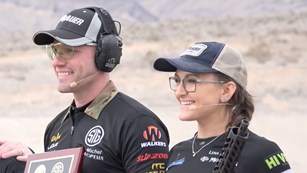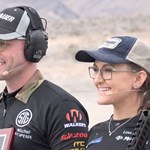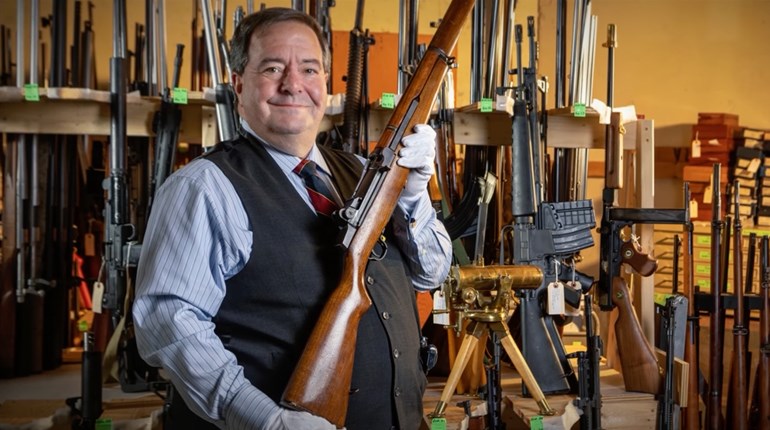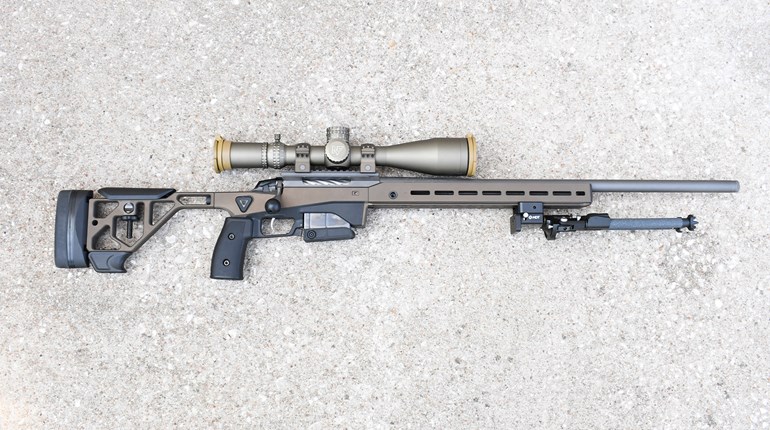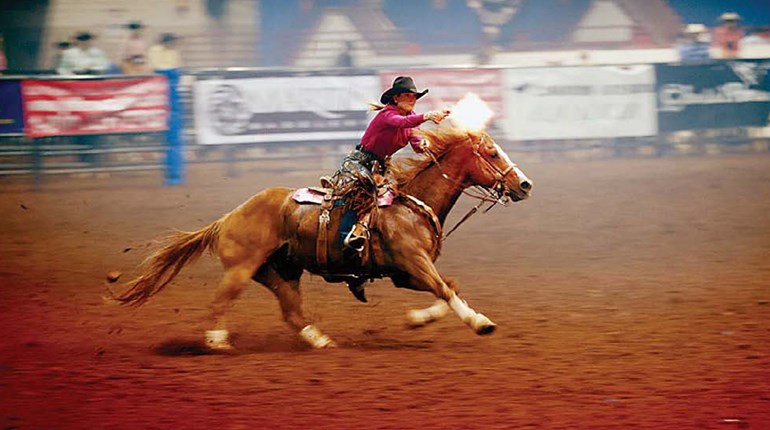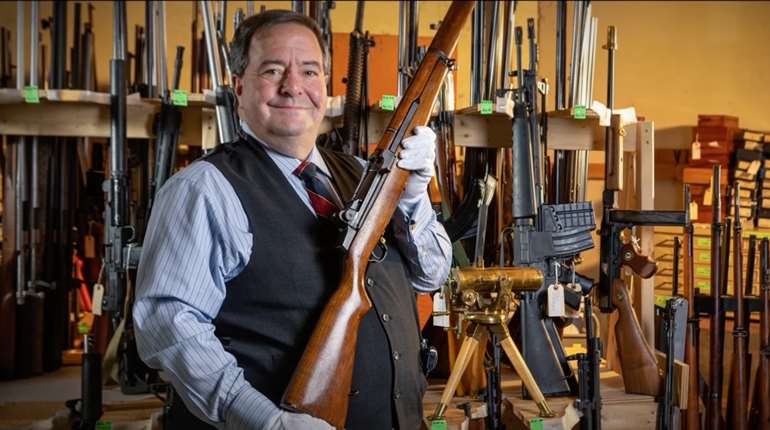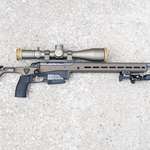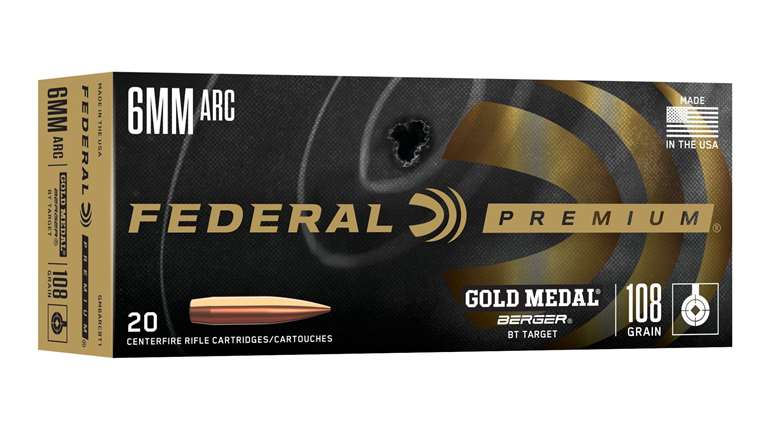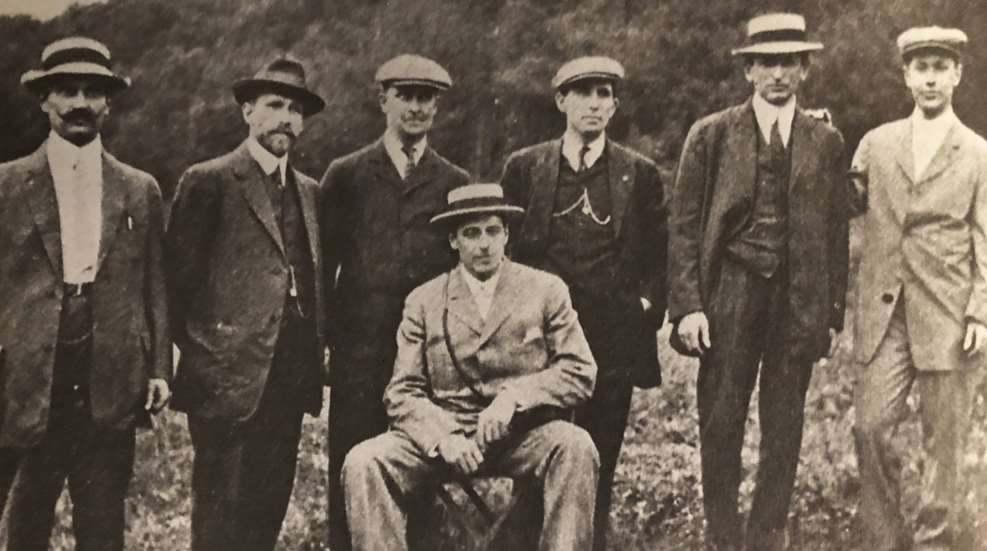
The below is an excerpt from the 1978 book, Olympic Shooting, written by Col. Jim Crossman and published by the NRA. Read Part 1 and Part 2.
1912—Stockholm: The Games Become An Event (Part 3)
By Colonel Jim Crossman
Pistol and smallbore rifle events were to be shot over the same ranges, at Kaknäs, a few miles outside of Stockholm. The high power rifle ranges were also at Kaknäs but a half-mile away from the smallbore rifle range. With the same man shooting several different events, this was bad enough, but to make matters worse the shotgun and running deer ranges were some miles away at Råsunda. After looking the situation over, it was obvious to Cmdr. Harris Laning (U.S. rifle team captain) that the shooters in the International would have to give up any idea of practicing for other events.
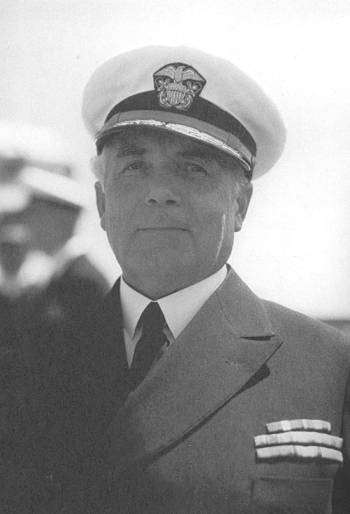
The U.S. team members were having enough problems with this match. The Swedes did not use spotters to locate the shot hole, as was customary in the United States. Their system of marking shot value was different and difficult to follow at first. But the worst blow of all was when the Swedes announced prior to the match that shooters could not use telescopes. Since U.S. shooters were generally trained to dope wind through the telescope, this could have been a major catastrophe. Fortunately, the team had done some training in wind-doping on flags and trees, so loss of the telescopes was not fatal.
Laning was to receive one other blow to his plans. Going by the printed program as he received it, he had organized his shooters into various groups to make best use of their experience in the various matches and they had trained in this fashion. It was a shock when he learned that the Swedes had changed the order of events, which threw his careful panning off kilter. As a result of the scheduling conflict, Laning decided to withdraw the U.S. entry in the any rifle 300-meter team match, especially as the team was equipped only with the Springfield service rifle.
In the first individual rifle match, Cy Osburn and the great French shot P.R. Colas tied for first with 94 on that difficult 600-meter target. In the shoot-off, Osburn led most of the way, but scores were even on the 19th shot. Colas collected a 5 for his 20th, while Osburn got a wart 4. Meanwhile, Briggs and Jackson were shooting for third place, with Jackson winning by one point.
In the other army rifle event, the 300-meter surprise fire, Hungarian A. Prokopp was high with 97, while Osburn, Skogen of Norway and Levidis of Greece tied for second with 95. Osburn made sure of his silver medal in the shoot-off by turning in a 99—the highest score of the match.
The Americans had not trained especially for the 50-meter prone team match, but they had some hopes of winning with their Stevens M414 single-shot, falling-block rifles. They soon found the sights inadequate. The rules specified the prone position for this match with no artificial support. The officials ruled that the ground was obviously not artificial and that the shooters therefore could rest their rifles on the ground. Strangely, only the Swedish team seemed to know about this, and they took full advantage of the knowledge—resting both the left hand and forearm and the butt of the rifle on the firing line. The English raised quite a fuss about this, but lost and went on to win by shooting ability, 762 to the Swedes' 748, with the U.S. four points behind for a third out of the six teams.
In the similar individual match, 20 shots prone at 50 meters on a target with a 1½-inch five-ring, Fred Hird was the clear winner, with a 194 and a 1-point margin. The next five places were taken by Englishmen.
The 25-meter quick-fire match was shot on the disappearing target and the Swedes, with their steady prone positions and Winchester M1903 autoloading rifles took the first three places in the individual match.
In the team affair, the U.S. was leading up to the last string, where one shot just grazed the silhouette. The officials ruled that the shot was a miss, which gave the match to the Swedes. The British, although handicapped by shooting single-shot rifles, took the silver medal. The Americans, like the Swedes and many others, used the Model 1903 .22-caliber rifles—but the American sights were inadequate.
Down on the pistol range, a talented, young American with only a couple of years of competitive experience was making history. Frank Kahrs, who was with Gould in Shooting and Fishing, with Drain in Arms and the Man and with Remington Arms Company for many years writes about Lane:
"Now somewhere in your story you want to feature Alfred P. Lane, the boy wonder pistol shot of his time and the only one to win three gold medals at 20 at the 1912 Olympics. He was unbeatable. At the time he was a member of the Manhattan Rifle and Revolver Association of N.Y. Later on, I think he came with Remington in the ad department and when I came with Remington he was already there. He had all the essentials that are necessary for a top flight performer. Youth, good health, clean living, ambition and no nerves. I remember one time we were riding out of the loop in Chicago on the elevated toward White City where he was to put on an exhibition. I had been talking to him for about five minutes and, hearing no response, turned to look at him and found he was sound asleep. You see what I mean. He left Remington and went with some technical magazine and headed up their photographic section."
Lane really did pretty well by his team. In the 50-meter precision match, Lane turned in a score of 509. The next highest score was a 475 by de Laval of Sweden. Lane's score, added to the fine shooting of Sears, Dolfen and Dietz, gave the U.S. a gold medal with a score of 1916, compared to Sweden's silver-medal score of 1849. Lane slipped in the 50-meter individual match, down to only a 499, just 25 points ahead of his teammate Dolfen. A British shooter, Stewart, followed with 470 for the bronze medal.
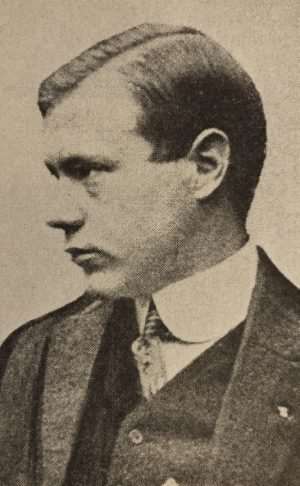
In the unfamiliar Dueling Match, fired at the 30-meter disappearing target, the U.S. team was out of the money, although Lane turned in the high score of the event. The Russians had managed to get their calendar trouble straightened out so that they made these Games on time and took second place in this team match, sandwiched between the Swedish match winners and the third-place British. Once again, Lane came through—winning the individual Dueling Match by a one-point margin, followed by Palen and von Holst of Sweden.
In addition to shooting the high score in all four of the pistol events, Lane won two individual gold medals and was high shooter on one gold-medal team. Not bad going for a youngster just getting started in shooting.
Although the U.S. team had entered the running deer matches, there was not much hope, aside from Walter Winans. But surprisingly, the U.S. team took second. Sweden won, 151 to 132. Shooting on the Swedish team was the father-son combination of Oscar G. Swahn and Alfred G.A. Swahn, who were also on the gold-medal 1908 team. In that year Oscar Swahn also won the gold in the single-shot competition. It was fitting, therefore, that Alfred Swahn should win the 1912 single-shot competition, while Oscar and Alfred finished third and fourth in the doubles. Altogether, Oscar Swahn won three gold medals, a silver medal and two bronze medals in the Games of 1908, 1912 and 1920. Although his shoes were big, son Alfred Swahn managed to fill them with great credit, as he won three gold medals, three silver medals and three bronze medals in the Games of 1912, 1920 and 1924. Together, they won a total of six gold, four silver and five bronze medals—a tremendous record. It is not likely that another father-son combination will come along and beat it anytime soon.
The second-place American team had only one experienced running deer shooter on it, Walter Winans. The other team members, shooting Remington M8 autoloading rifles with the .30 Remington-UMC ammunition, were the surgeon, Neill McDonell, the adjutant, Professor William Libbey and extra man William Leushner. Winans did not shoot up to his usual form of 1908, and the silver team medal was the only trophy won.
The clay pigeon shooters did their part at the Råsunda ranges. Although the 1912 Olympic style of shooting was completely strange to most American shotgunners, the U.S. team got off to a one-bird lead over Germany in the first of the three stages. At the end of this stage of 20 birds per man, France was eliminated from the competition. At the end of 50 birds and the second stage, the U.S. was leading the British by five birds and the Germans by six; Sweden and Finland were eliminated. The six-person team shot 90 birds each on the continuous-fire system and 10 birds each at unknown angles from unknown traps. The Americans scored 532, the British were second with 511 and the Germans were third with 510.
Jay Graham had the fine score of 94, with Charles Billings only one target behind.
Graham did even better in the individual match, which was fired under similar conditions. His 96 was good for the gold medal, with Germany's Goeldel earning second place with 94 and the Russian Blau third with 91.
Although Graham was shooting under unfamiliar international conditions, his friends were not surprised at his win. He was one of the outstanding trapshooters of the time and had such records to his credit as 432 birds straight (set a couple of years before). The ranks of amateur shooters were sad when Graham decided to turn professional (according to American rules) shortly after he returned from his success at the Olympics.
The International rifle team match, unlike the 1908 match at Bisley, was fired on a fair, sunny day that began with little wind. The scene was most picturesque, with the colorful uniforms of the officials, spectators, shooters and the flags of the various nations stirring gently in the breeze.
Not the least of these were the Russians who had successfully made the Games on time. In green wool knickerbocker suits, Norfolk jackets and golf stockings, and wearing green alpine hats they were quite conspicuous on or off the firing line. On the firing line they were easily spotted, since they insisted on shooting with the bayonet on the rifle. The Mosin-Nagant rifle was long by itself, but with the bayonet attached it measured nearly six feet from buttplate to bayonet tip.
Shooting was not a very popular sport in Russia, by order of the Czar. Some dozen years before the 1912 Games, an attempt had been made to organize a country-wide rifle society and to encourage shooting on a broad scale. But the scheme was not approved, since the growth of the revolutionary movement among the people "caused the tsarist government to fear the arming of the nation and the teaching of the art of accurate shooting," according to a Russian shooting history. Shooting was the privilege of the ruling classes and the management of the shooting societies was very reactionary. One large society, for example, excluded persons of lower military rank, students, women and persons of the Jewish faith.
Despite these restrictions, there were a few good shots, among whom was N.A. Panin-Kolomenkin, an outstanding figure ice skater, who was the 10-time Russian champion in pistol shooting. Kolomenkin finished eighth in the 1912 Olympic 50-meter event, for the highest individual place of any Russian rifle or pistol shooter. Generally, the Russians were unhappy about their showing in the Games and it was 40 years before they tried it again.
The American team was the favorite of the dopesters, although some figured the Swedes, shooting a familiar course-of-fire on familiar grounds, was a likely prospect for the winner's circle. But the issue was not long in doubt. At the end of the 200-yard stage, the U.S. team was 10 points ahead of the British and 21 points up on the Swedish team.
One of the early U.S. decisions came back to haunt the team about this time. The team had once again picked ammunition made by the U.S. Cartridge Company, but had settled on the lighter 150-grain bullet. As the day wore on and the teams dropped back to the longer ranges, the wind picked up, getting worse with each range. The Americans began to wish they had brought ammunition with better wind-bucking ability, such as the 1908 load with the 180-grain bullet. The wind-doping of the Americans was stretched to the limit to keep up with the rapid wind changes. Meanwhile, the British had shifted to a heavy, 220-grain bullet and apparently were not being bothered much by the wind.
Troubles or not, the U.S. team led by 10 points after the 200-meter stage, by 44 points after 400 meters and by 77 points at the 600-meter range, ending 85 points over the British score—1687 to 1602. The Swedes scored 1570. As for the ability of the U.S. shooters, the low individual score on the U.S. team was 176, while the high individual score on all the other teams was a lone 176 made by the great British shot, H. Ommundsen.
The decision to do things differently was a good one all right. The U.S. won the three big team matches it was after—army rifle, pistol and shotgun—plus four individual gold medals, four silver medals and three bronze medals. The Swedes won out in the overall count, however, 7-6-4 with no one else close.
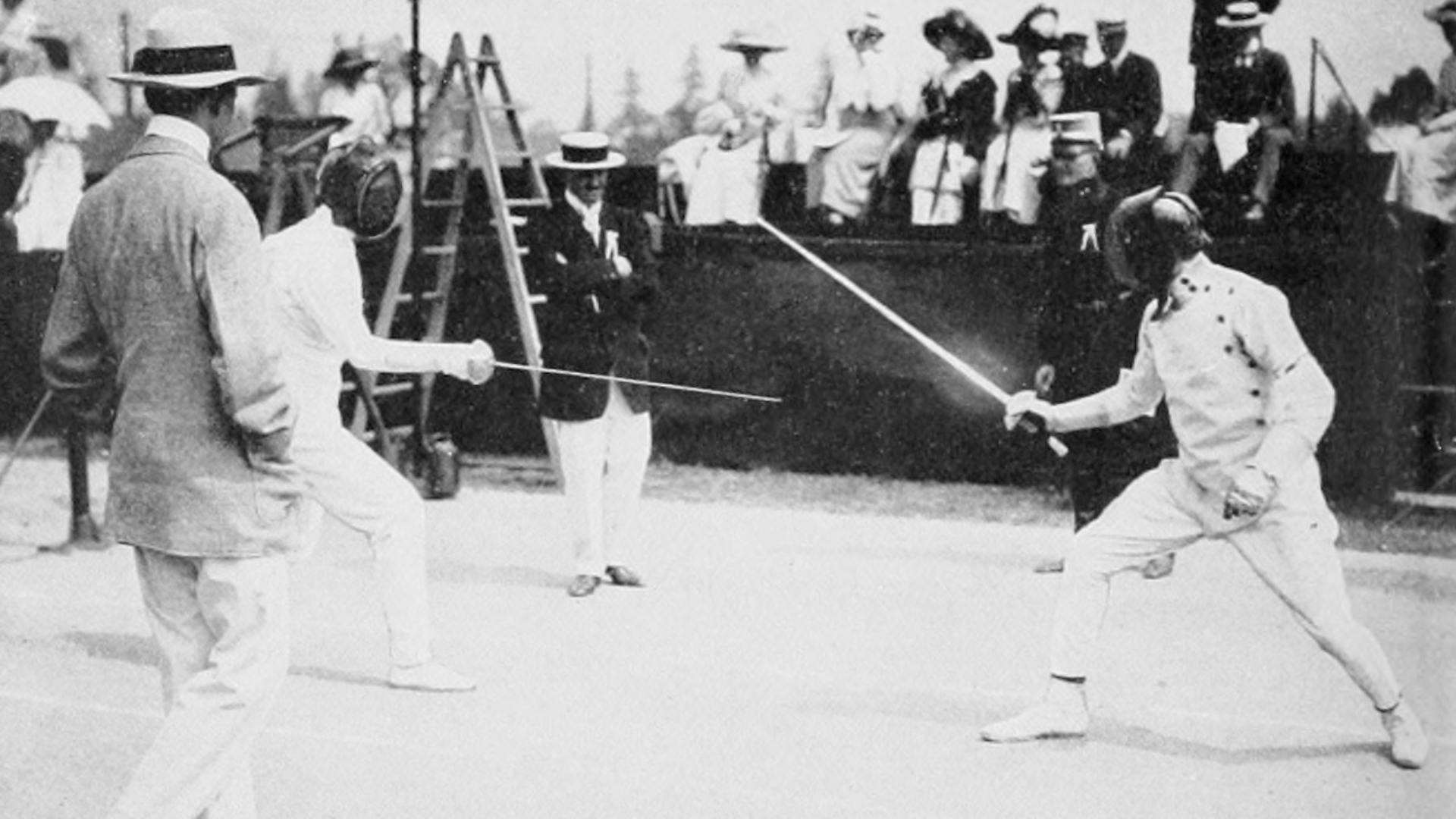
A new event was introduced in these Games, the modern pentathlon, and it is of interest because one of the five events was shooting. The others were horseback riding, swimming, fencing and cross country running. The event was won by Lilliehook of Sweden, but he was bested in three of the five events by a U.S. Army lieutenant named George S. Patton. Shooting the pentathlon event was somewhat like the dueling match shot on the silhouette pistol target.
The jury working on the other shooting event, the award for game shooting, after extensively wrestling with the problem finally threw in the towel in despair. They concluded that game shooting was unlike any other Olympic event, since the happenings did not take place at the location or time of the Games, nor with contestants directly opposing each other; that the event was probably being reported by someone who did not see it; and that it was being judged by people who definitely did not see it. Consequently, it could easily become a contest between literary styles rather than game shooting. The committee recommended that no medal be given and the whole idea abandoned.
While I do not intend to cover the fine arts competition in detail, you should know that Walter Winans won a first prize in sculpture. There are not many other people who have won Olympic gold medals both in shooting and in sculpture.
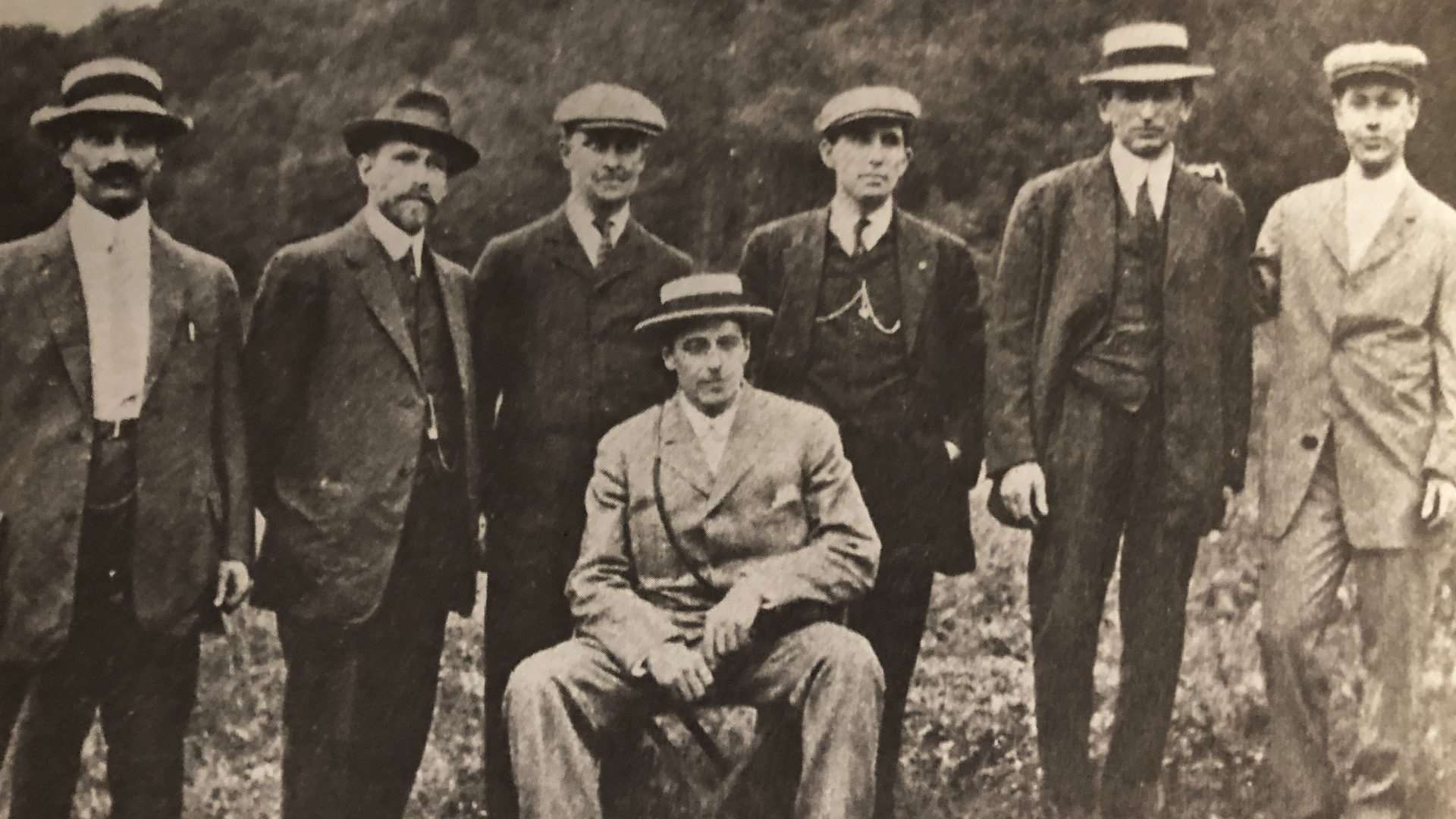
Photo: The 1912 U.S. Olympic Revolver Team—Dr. Reginald H. Sayre (Team Captain), standing, left to right, Hans Roedder, Dr. H.E. Sears, T. LeBoutillier, P. Dolfin, John Dietz and A.P. Lane.
Read more: London 1908 Olympics: The U.S. Team Almost Missed The Games











